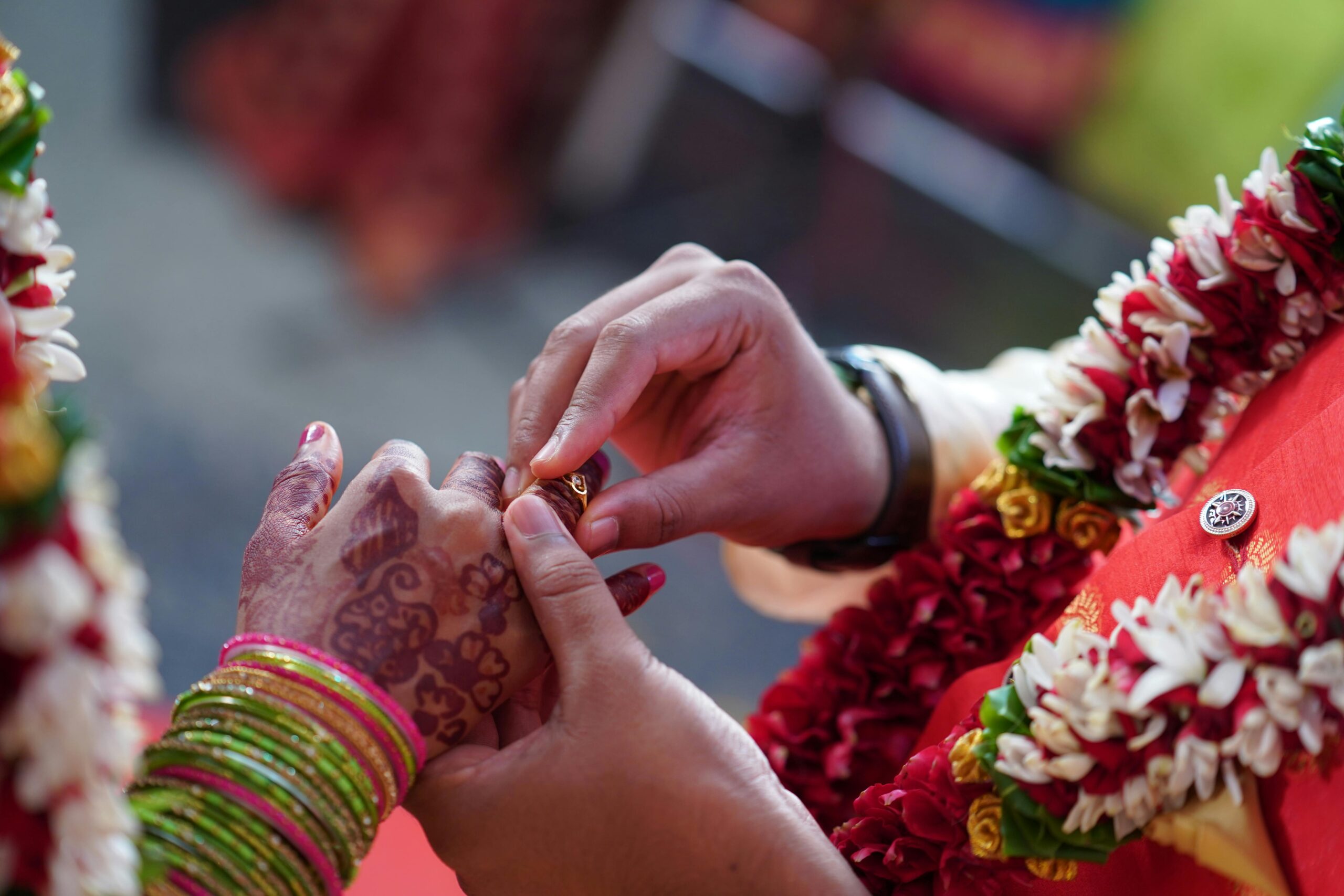
In South India, weddings are beyond just social events or gatherings. They are auspicious celebrations of the union of two souls, the bride and groom. Moreover, it is a celebration that marks the union of two families. South Indian wedding rituals are divided into four communities: Tamil, Telugu, Kannada, and Malayali. The wedding rituals vary in every community.
In this article, we are going to explore South Indian wedding rituals step by step. This guide offers you a glimpse of the traditional practices that people have followed and believed for decades.
South Indian Weddings: An Overview
South Indian weddings are woven into a few known components. They mostly include rich designer silk sarees with gold jewellery that entail a story of legacy, love, and heritage. The atmosphere is delighted with the sweet smell of jasmine flowers, while the harmonious melody of Mrudanga and Nadaswara merges with the sacred chants of priests and purohits.
Step-By-Step Guide To Wedding Rituals
1. Engagement Ceremony (Nischayathartham)
This ceremony or ritual is performed before the wedding. The bride and groom’s families take part in a formal engagement ceremony. Also, the families generally exchange gifts in this ceremony. The priest and purohits perform divine rituals to bless the upcoming union of the couple and bless them for life-long partnership and togetherness. In this ceremony, the pandit, after making astrological calculations, generally fixes an auspicious date and time for the wedding.
2. Haldi ceremony (Pellikuthuru)
As the name indicates, the main intent of the ritual is to cover the bride and groom’s bodies with turmeric (haldi) paste. They conduct this ceremony separately in their respective homes before the wedding day. This ritual holds great importance, as they believe turmeric cleanses, purifies, and gives a natural glow to the skin. This marks the symbolism of getting the couple ready for their big day.
3. Worship of Goddess Gauri (Gauri Puja)
This ceremony takes place in the bride’s home. Do you know why this ceremony takes place only in the bride’s home? This ritual is all about worshipping Goddess Parvati. It is believed that she is the symbol of purity. This ritual takes place before the wedding so that the bride can seek blessings from Goddess Parvati. The bride’s uncle completes the Gauri Puja by gifting her a saree along with other items.
4. Purifying bath (Mangal Snaanam)
It is the ritual in South Indian wedding rituals, a step-by-step guide. In this ritual, the bride and groom get a holy bath in their respective homes. The couple applies a paste made from turmeric and pure oil to their bodies, followed by a shower. This ritual typically takes place in the early hours of the wedding day.
5. Procession of the groom (Janavasam)
The groom’s family arranges a lavish procession, escorting the groom to the wedding venue, surrounded by family and friends. In celebration of the special day, the guests in this event dance to the music in joy.
6. A journey to Kashi (Kashi Yatra)
Are you guessing that the bride and groom have to go to Kashi? No, this is a playful yet pure ritual in following Tamil wedding rituals step by step. In this ceremony, the groom declares or acts like he is leaving for Kasi and doesn’t want to proceed with the marriage rituals anymore. Then, the father of the bride rushes to the groom and pleads not to leave the city. He offers his beautiful daughter to the groom to make his stop. After that, the groom agrees, and the purohits proceed to the next ritual.
7. Exchange of Garlands (Maalai Maatral)
The next step is the ritual, where the bride and groom exchange garlands to portray that they accept each other as their partners. The garlands need to be exchanged three times for sacred beliefs. Family and friends often make this ceremony more fun by lifting the couple and making the ritual more challenging yet fun. This is a cheerful promise of mutual love, trust, respect, and acceptance for their new life together.
8. Giving away the bride (Kanyadanam)
The most sentimental part of the whole wedding ritual is when the bride’s father has to give away his daughter in the hands of the groom. It is an emotional moment when the father places the bride’s hand in the groom’s hand with trust and takes away a promise that from now on, his daughter is in the groom’s care. The bride’s father then washes the feet of the groom to symbolise respect. This ritual shed light on how deeply rooted family values are in South Indian culture.
9. Tying the Sacred Thread (Mangalsutra Dharanam)
The Mangalsutra Dharanam is the most important ritual during the wedding ceremony. In this, the groom has to tie the sacred thread, which is called mangalsutra, around the bride’s neck. The holy chants of purohits and music from traditional instruments fill the background as the couple, and their guests beautifully express overwhelming emotions and delight.
10. The Vows and Seven Steps and sacred fire ritual (Saptapadi)
This is a crucial ritual during the wedding, where the couple takes seven steps around the sacred fire (Agni). While taking each step, they take the vows of love, respect, friendship, trust, care, and support each other forever. Then, the couple offers prayers to Agni and seeks blessings for a prosperous and happy married life.
11. Blessing ceremony (Aashirvada)
The wedding ceremony concludes with the couple touching the feet of elderly people seeking blessings for a happy and long-lasting married life.
Conclusion
Each ritual followed has its own significance and cultural resemblance. South Indian weddings are a beautiful tapestry of bright colours, sweet smells, and melodious sounds that make emotions etched into each ritual followed in the ceremony. While each South Indian community has its distinct elements to the ceremonies, the essence is mutual. Indian weddings are a celebratory event of togetherness, blessings, and shared values.


